Enab Baladi’s Investigation Team
Mohamed Homs – Diaa Odeh – Nour Dalati
From February to March 2018, 1500 civilians were killed in Ghouta battlefield before the whole city surrendered to those who besieged it, and thus the Syrian revolution lost its largest castle and last effective fortress.
The Syrian regime took most of the territory of the Ghouta by force of arms, and killed civilians who were hiding during the last military campaign in underground shelters, while the area that did not fall militarily was handed over by an agreement signed between the Russian side and al-Rahman Legion, Jaysh al-Islam, and Ahrar al-Sham factions operating in the region.
After the agreement, the Eastern Ghouta was totally deserted. All its surviving inhabitants were either taken by displacement buses to the north of Syria, or kept in detention centers, and the biggest part arrived at the shelters in the regime controlled areas. However, most of the city’s inhabitants returned later to Ghouta again.
In this file, Enab Baladi monitored the current situation in Ghouta and its people’s situation a year after the regime and its Russian ally seized control of the region. It tries to identify the service, social, demographic, and military situation that has changed dramatically with the change of the military situation.
Ghouta: Military-ruled ruins…
Today, Ghouta is living in a state of siege similar to that it witnessed between 2013 and 2018 at the service, relief and security levels, but the difference is that food is available.
With dozens of announcements about the restoration of electricity to areas east of the capital, as well as the restoration of water and communication services, the needs of civilians are still not covered by those services repeatedly announced by the regime.
Enab Baladi spoke to five people from the eastern Ghouta who returned to it, all of whom refused to be identified for fear of the regime prosecution. They described the service situation as “miserable”, especially with regard to the water and electricity services.
According to the five sources, the electricity is continuously cut for five hours, operates for only one hour, and then it is cut again, while water reaches homes one hour a day, and people rely on submersibles and artesian wells which they dug during siege in the previous years to get water.
Some areas of Ghouta also lacked many of the services that were the top priorities of organizations before the regime forces controlled the region, while food today enters without manipulated prices, unlike in the past.
At the same time, towns and cities within the region are witnessing better service conditions than other towns. Electricity reached the cities and towns of al-Malihah, Jisreen, Hamuriyah, Saqba, Zamalka, Ein Tarma, and Kafr Batna, and has not yet reached the towns of Mesraba and Madira, and about 70% of the city of Duma in addition to its suburbs (al-Rayhan and Chifonia), according to the sources.
Al-Marj area is experiencing a similar situation of limited services, their shortage in some areas, and their total lack in other areas.
Security checkpoints tearing down different parts of the area
Security checkpoints are deployed in towns and cities of the Eastern Ghouta and its surrounding areas, starting from its southwest entrance on the main road leading to the cities and towns of al-Marj, which is adjacent to the Damascus International Airport and the entrance of the town of al-Malihah from the agricultural lands of Jaramana.
At the two entrances, there are two main checkpoints, the task of which is security checks and scrutiny. According to local sources, there is another checkpoint from al-Malihah, south of the central part of the country to Jisreen, the entry point.
In the towns of the central part of the country, al-Assad forces separated the entrances of the cities and towns of the area with other checkpoints.
Along the road linking the town of Jisreen to the city of Hamuriyah, al-Assad forces established four main checkpoints, which are located at the entrance of Jisreen and the entrance of town from Jisreen, the entrance of the city of Saqba from Kafr Batna, and the entrance of Hamuriyah from Saqba.
There are also about three checkpoints on the road connecting the town of Beit Sawa and the town of Ein Tarma, passing through Hamuriyah, the Haza town, and Zamalka town.
At the northern entrance to the area from Duma, the biggest checkpoint was set up. It was controlled by Russian forces in partnership with the 4th Regiment of the regime forces, while the remaining checkpoints in the area are divided between the fourth division, the Republican Guard (RG) and the security branches (State Security, Air Intelligence, and Military Security).
The judiciary and the recruitment division are more important than restoring water and electricity
The Ministry of Justice in the government of the regime equipped many courts since it controlled the Eastern Ghouta until the end of 2018, and most of the courts of the region resumed work, such as Arbin Court, and Harasta Court. In addition, it opened the Judicial Complex in Babbila and Kafr Batna and restored the judicial complex in Duma, local newspaper Tishreen reported on January 1.
On January 5, the government of the regime ended the restoration of the recruitment division in Duma and stated in an announcement within the region that the work would take place within days of the completion of the restoration.
The Ministry of Transport reopened the office of the Damascus Rural Transport Directorate in Harasta, instead of its temporary office in Nahr Isha.
The Transport Minister Ali Hammoud, quoted by the governmental newspaper Tishreen on January 27, said that the reopening of the office comes in conjunction with the steps taken by the Ministry of Transport to simplify procedures and facilitate services to citizens, and “to promote bringing life to Damascus countryside and help returning citizens to follow up their activities and work, so as to activate economic, developmental, social and service life.”
Further demolition rather than reconstruction
The forces of the regime are spreading rumors among civilians that their government is going to commemorate the anniversary of the “liberation of Ghouta from terrorism,” according to local sources. Meanwhile, the region is suffering from the rubbles pilling in the corners of the streets, and the government refuses to remove it and requires the ones who wish so to pay for transporting it to landfills.
The governorate of Rif-Dimashq previously stated in July that it has allocated more than three billion Syrian pounds to implementing reconstruction projects in Eastern Ghouta, out of five billion the cabinet has dedicated for that purpose. However, the governorate did not take any reconstruction measures so far, instead it is demolishing some buildings through detonation.
From early January to mid-February, Enab Baladi has monitored more than 10 cases of building detonation in Eastern Ghouta.
Most of these explosions targeted buildings located on the two sides of the Homs-Damascus highway, on both sides of Harasta in Eastern Ghouta and western al-Qaboun. Likewise, Jubar district witnessed three bombings within ten days while Hamuriyah town had one explosion.
According to the official version, the bombings target war remnants in the region. However, the TASS Russian news agency quoted the commander of the engineering unit affiliated to al-Assad forces in the region, Mayas Mahmoud Issa, who is in charge of demining in Rif Dimashq, saying that his unit worked to collect mines and remnants of war, part of which was destroyed. The unit is also using the other part to demolish buildings that “are supposed to be demolished.”
Arrests and recruitment despite settlement
Following the military operation, through which the forces of the Syrian regime was able to take control of areas in Eastern Ghouta, the regime and Russia held separate agreements with the factions, which were previously controlling Ghouta. Those agreements displaced the combatant and civilians, who are not wishing to regularize their situation with the Syrian regime, and regulated the situation of those who preferred staying there.
The citizens who went for settlement were provided with guarantees assuring them that they will not be prosecuted. However, a large number of young people were arrested and detained in the security branches of al-Assad forces.
After the beginning of the settlement process carried out by al-Assad forces since early May until the end of July 2018, males aged over 16 years, and those living in shelters located in regime-held areas, have visited the Air Force Intelligence and State Security to complete the settlement procedures. Following the departure of some families from shelters, some young people have been deported to detention or reserve and recruitment duties, since May 2018.
The exact figures of the number of detainees and forcibly recruited are unknown. However, according to local sources, the regime arrested and recruited about 2,000 young people between May and September 2018.
Subsequent recruitment campaigns
To start up, the recruitment campaigns targeted the shelters, which housed more than 144,000 civilians according to Russian official figures. Al-Assad forces launched several campaigns in a sporadic manner in order to recruit those who have just regulated their situation.
The regime forces deployed in the vicinity of Eastern Ghouta prevented young people assigned to the reserve duties and compulsory services from leaving to Damascus, as part of the security measures imposed in the areas of Eastern Damascus.
This process started on 25 November, 2018, in Duma and went further to include the rest of the surrounding barriers in Ghouta. The ban came after the names of those wanted for both compulsory services and reserve duties were circulated in the region, and the beginning of the process of forcibly taking in the wanted.
According to Enab Baladi, the process of enforced recruitment was determined by dates defined according to education certificates. Dates allocated are between January and November 2019.
A former wanted to reserve duties spoke to Enab Baladi on conditions of anonymity and said he was subject to investigation for more than two months, and had his settlement completed before joining al-Dreij military barracks in which he underwent military training.
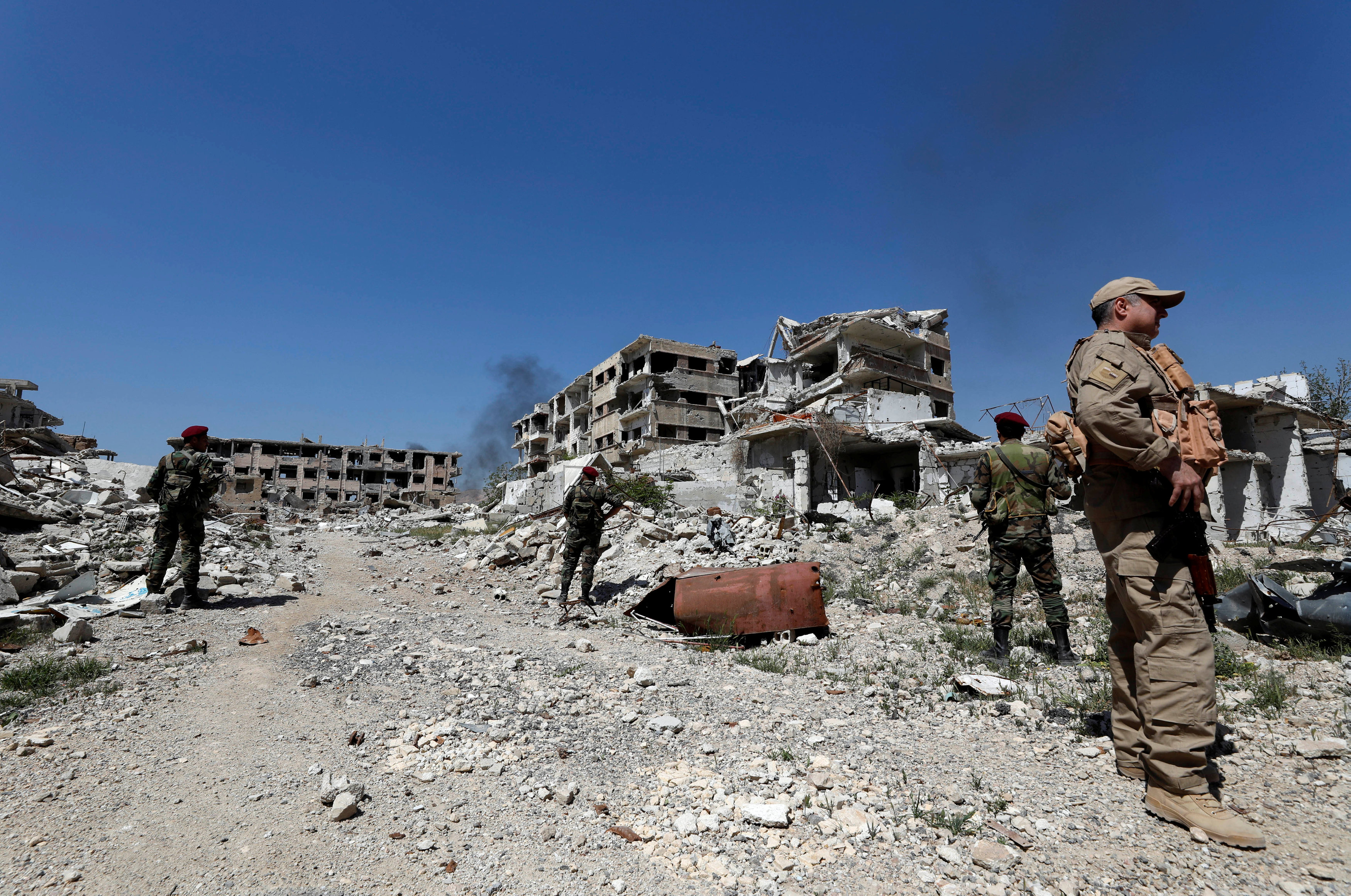
Russian troops and Syrian forces guarding the place, where al-Assad forces targeted Duma city with chemical weapons – May 2018 (Reuters)
1271 cases of arrest
In early August, al-Assad forces launched a campaign of arrests, which has been considered as one of the largest security operations since the regime took over Ghouta, for it has targeted the regime dissidents and activists in the Syrian revolution. The campaign was carried out in the cities and towns of Saqba, Hamuriyah, Duma, Mesraba, and Ein Tarma.
The regime also subjected local activists, civil society workers, and former media professionals, as well as members of local councils and relief agencies, to investigations into the aids they received when the area was held by the opposition.
Security branches launched arrest campaigns targeting members of the former “local council” and other members of Rif-Dimashq Provincial Council in the city of Kafr Batna in central Ghouta, according to Enab Baladi referring to local sources.
Sources affiliated to the council told Enab Baladi that Syrian security forces raided the houses and workplaces of the detainees before taking them to an unknown destination. Other local council members, who preferred to stay in Ghouta rather than go to northern Syria, are detained for the same reasons.
Madira town has witnessed one of the largest mass arrests campaign is August, for around 40 civilians were abruptly arrested during one night-time raid.
The arrests also included money exchange and currency exchange offices. Al-Assad forces asked them to provide all data relating to the senders and recipients of remittances prior to their release.
The Syrian Network for Human Rights (SNHR) monitored around 55 arrests in January 2018 by al-Assad forces in Rif-Dimashq, most of which were in the Eastern part of the governorate.
In its annual report for 2018, the SNHR reported that it documented 1271 arrests of civilians in the countryside of Damascus, mostly in Ghouta, between March and January of the same year.
Where are the inhabitants of Eastern Ghouta?
According to the statistics of the Humanitarian Aid Coordinating Committee, which was formed by a group of organizations and institutions concerned with humanitarian relief in order to conduct a census of Ghouta before the recent military campaign, the population of the region was estimated at about 325.000 during the domination of the opposition factions.
According to the figures of the Russian Defense Ministry, after the settlement, about 144.000 civilians went out of the safe crossings opened by the Syrian regime towards the areas under its control (that is to Damascus) under the auspices of Russia. Hence, 65.000 others headed to the north of Syria under the same agreement, according to estimates of the “Response Coordinators” team.
Most of those who went through safe crossings returned to Ghouta during the past months, in spite of the poor condition of available services and the regime’s futile attempts to reactivate some services.
There are no accurate statistics on the number of Ghouta residents who remained in the areas controlled by the regime, compared to those who returned to their cities, towns, and villages.
The North: The first destination
The statistics released by the “Response Coordinators” team indicated that 70,565 people left the countryside of Damascus toward the north of Syria during the recent military campaign launched by the regime in March, 2018, during which al-Assad forces managed to take over the area in charge.
66377 of these locals, who are from Eastern Ghouta towns, have dispersed at the beginning across the towns and villages of Idlib,; specifically in temporary camps set up to receive them or in the camps, which were already set up there.
Afterward, the migration movement began and the distribution map of Ghouta’s displaced people in the north changed. Eng. Mahad al-Hallaj, Director of the “Response Coordinators” team in the north of Syria, told Enab Baladi that there was a significant shift in the number of displaced persons compared to the first two months of their arrival to the region.
Al-Hallaj added that the displaced locals of Ghouta were settled at first in Idlib and the Euphrates shield’s areas. However, after the battles of the Olive Branch Operation and the relative stability there, many families moved to Afrin, followed by Idlib, which witnessed the arrival of a flow of Eastern Ghouta locals, in addition to Harem district in the northern countryside of Aleppo, then the camps, and the Euphrates shield’s regions.
Afrin: A gathering of Ghouta locals in north of Aleppo
Today, the largest part of Eastern Ghouta’s displaced locals is located in Afrin, the area that used to be the most important location of Ghouta’s two military factions.
The population of the countryside of Damascus (the majority of which is composed of Eastern Ghouta inhabitants) in Afrin is estimated at 27532, distributed in the city of Afrin and the surrounding countryside areas, according to statistics of committees of the countryside of Damascus in Afrin.
When we do not consider the number of displaced people from Damascus, south of Damascus, al-Qalamoun, and Ghouta from the previous statistics, we find that the number of Eastern Ghouta’s locals based in Afrin has reached 22294, 17577 of whom are located in the city and 4717 in the countryside.
According to statistics obtained by Enab Baladi from the “Relief Office of rural Damascus migrants in Afrin”, the locals of the countryside of Damascus represent 30 percent of the total population of Afrin, while the resident population is estimated at 37 percent.
As for the distribution of families in the region according to cities from which they migrated, the statistics of the committees of the countryside of Damascus in Afrin indicated that 580 families from the city of Duma are distributed between Afrin and its villages, while 329 families came from Saqba, 80 families from Kafr Batna and 304 families from Jisreen, in addition to 393 families from Arbin.
While the number of families coming from the village of Beit Sawa is 92, 134 families from the town of Hamuriyah, 147 families from the village of al-Masrab, and 125 from the town of Madira, in addition to 504 families from Harasta, 234 families from Zamalka, and 99 families from Ein Tarma.
Additionally, there are 63 families from the town of Hasa, 443 from the southern sector, 505 from Duma village and 256 from al-Abbadeh, 183 from al-Nashabiyah, 61 from Otaybah, and 113 from the village of al-Jarba, in addition to 1062 families from the al-Marj sector and 615 from Jubar neighborhood.
“Army” and “Legion”
Foes in Ghouta, friends in Afrin
Perhaps the reconciliation between Jaysh al-Islam and al-Rahman Legion after their arrival in the north of Syria, under the settlement agreement, was more difficult for the people of eastern Ghouta than the bitterness of displacement. This uneasiness about the truce originated from both factions’ history of armed dispute against each other over the years, which was the major reason for the fragmentation and military dividedness of Ghouta, before the total control of Russian- backed al-Assad forces over the region.
During the first months of 2018 and after a few days of the arrival of Jaysh al-Islam and al-Rahman Legion to the countryside of Aleppo and Afrin, coming from Ghouta, pictures of the prominent leaders of the factions, Abdul al-Nasr Shamir and Issam Buedany, as well as leaders of the National Army during a peace banquet in Afrin were circulated. During the event, the aforementioned personalities declared the end of division and conflict and “a return to the state of brotherhood”. However such an announcement came too late and after years of recurrent calls to step aside the differences and unite against the common enemy, namely the Syrian regime.
Today, the two major brigades operate within the “third legion” of the National Army, meaning that they are fully submerged. However, the new merger is not related to the way it will manifest as much it depends on the political landscape of the region both factions had arrived to. The two factions’ new home is fully run and organized at all levels by Turkey; especially the military field, which has developed over the past two years through the formation of the National Army and its legions.
The objectives are differed from those of the past. In the north, the fronts with the Syrian regime have been completely frozen. The arms have been handed over to the Kurdish forces of the People’s Protection Units, which Turkey classifies as terrorist groups, as they are linked to Kurdistan Workers’ Party (PKK).

Combatants of Jaysh al-Islam faction during a training camp in the countryside of Aleppo – January 2019 (Jaysh al-Islam)
New military mindset and action
During the previous years of its military service in Ghouta, Jaysh al-Islam was known for its military organization, either in terms of its members, officers, or plans it had followed throughout its military course. The faction’s military operations had been previously led by hundreds of dissident officers who had recently joined the military academy it had established in Ghouta.
According to well-informed sources about the faction’s military action, Jaysh al-Islam is currently working under the cover of al-Mu’tasim Brigade belonging to the Syrian National Army. The sources added that after its arrival in the countryside of Aleppo, the faction has started Sharia courses for its members, emphasizing the necessity to fight against Hay’at Tahrir al-Sham and the Kurdish formations in particular.
In August 2018, Jaysh al-Islam revealed that it had established five camps in the northern countryside of Aleppo, and published a video recording showing the camps, which were spread between al-Bab city and Afrin district. According to the video recording, the first camp had been immediately established for the Jaysh al-Islam’s chiefs of staff headquarters, in which the faction announced the new phase that will be followed after gathering its forces that left Ghouta.
As for the other camps, one had been established in Afrin district for the combatants of southern Damascus. Another had been established for the Division 1 and contains training grounds. Two other camps for Divisions 2 and 3 and the back-up brigades were also set up.
As for the military hierarchy of the faction, leader Issam Buedany is still on top of Jaysh al-Islam to this day, along with the Chief of Staff, Lieutenant Colonel Ali Abdul-Baqi, the Head of the security apparatus, Abu Qusay al-Dirani, and the faction’s Mufti Abu Abdulrahman Kaakah.
In a visit to Deir Ballout Camp in Afrin, last May, in which he met with dozens of displaced people from Eastern Ghouta, Issam Buedany said in a speech: “We have three enemies, the Kurdish militia, Hay’at Tahrir al-Sham and ISIS,” which contradicts the main goals for which Jaysh al-Islam was established, which are fighting al-Assad’s forces and their supporting militias.
This reorganization process falls within the framework of rapprochement between Jaysh al-Islam and Turkey. This approach has first started to be manifested in the reaching of the areas of the Euphrates Shield in the north. Despite the great difference between the faction’s previous policy (Saudi support) and current policy (Turkish support), Jaysh al-Islam is on the one hand trying to adapt with the land in which it operates, and keep up with the influencing parties in the Syrian file, most notably the Turkish side, on the other hand.
In the framework of the aforementioned rapprochement, Buedany, his deputy Ali al-Hosseini, and his assistant Anas Shaykh Bezina, met last October with Düziçi Mayor Ökkeş Namlı in Osmaniye Province (Turkey).
Localization in Afrin
The situation of al-Rahman Legion faction is not different from that of Jaysh al-Islam, except for the military action zone. Jaysh al-Islam had been deployed in several areas in the northern countryside of Aleppo, while al-Rahman Legion’s action had been focused in Afrin district where it established several camps for its forces.
Since its departure from Eastern Ghouta until the beginning of this year, al-Rahman Legion has remained without a military strategy, until it announced, in January, its reformation in the north of Syria.
Wael Alwan, al-Rahman Legion Spokesperson, said that his faction has re-formed itself within its camps in Afrin district in the northern countryside of Aleppo, under the affiliation of the “Third Legion” one of the formations of the Syrian National Army.
Colonel Abdel Nasser Shamir is still to date the leader al-Rahman Legion, which kept all its leaders, and tried to adapt with the rest of the factions in the north immediately after its arrival, thanks to its special military orientation, as it is affiliated to the Free Syrian Army.
Alwan told Enab Baladi, that al-Rahman Legion reorganized itself after its departure from Ghouta, and carried out full military trainings for its old and new members in the camps that it has equipped in Afrin district.
Alwan added that the reorganization took several months due to “the faction’s continuous keenness to work properly, taking advantage of the experience of dozens of officers in its ranks and leadership.” Alwan pointed out that “al-Rahman Legion depends on the military organization and discipline and intensifies the training. The faction has also increased the readiness of its members to become elite forces able to face any challenge.”
There are no accurate figures for the faction, whose name may be fully omitted in the upcoming days because it has been fully integrated into the “Third Legion” along with Jaysh al-Islam. This happened with the factions affiliated to the Syrian National Army, whose names have been omitted following their full integration over the past years.
Alwan explained that “the step of joining the Syrian National Army came under al-Rahman Legion leadership’s belief in the need for the military action’s full coordination and organization under one command. The Legion has made this step after announcing the completion of the camps’ equipment, rearranging the ranks, and organizing the military training sessions.
Alwan also said that the faction’s goal has been set after heading towards the north. The main goal is “defending the liberated areas against all enemies, the first of which are al-Assad’s forces and their supporting militias, in addition to confronting the attacks of terrorist groups, especially separatist groups, as well as ISIS cells.”
if you think the article contain wrong information or you have additional details Send Correction
النسخة العربية من المقال
-
Follow us :












 Regime forces checkpoints in Duma 2018 (Reuters)
Regime forces checkpoints in Duma 2018 (Reuters)





 A
A
A
A
A
A




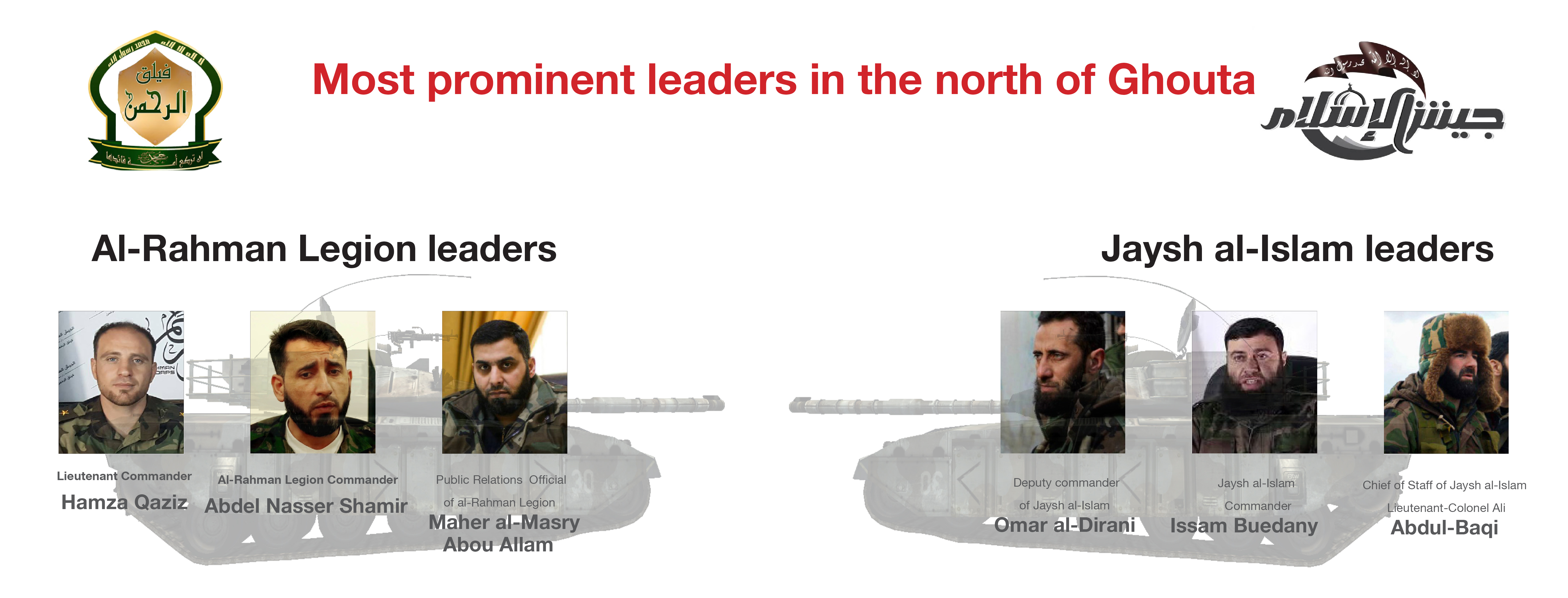



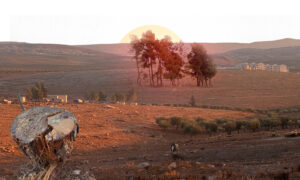
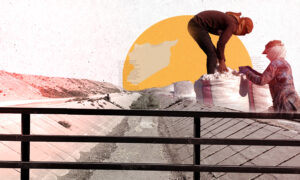

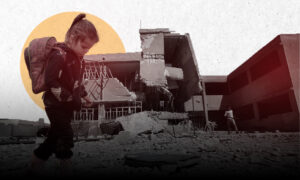
 More In-Depth
More In-Depth